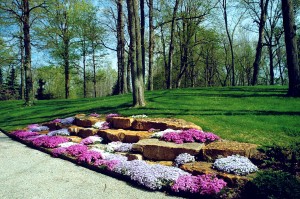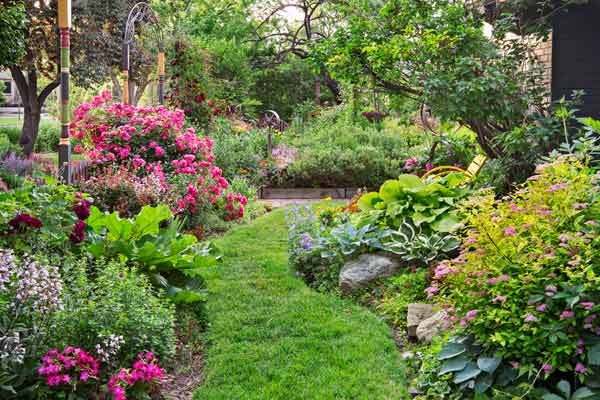Ah, perennials, the plants that keep on giving……Buy one get one free, and then some. The beauty of using perennials in your garden is the fact that most of them thrive and reproduce, eventually giving you more than the one plant you originally acquired. They can spread by stolons (underground stems with active buds), rhizomes (creeping rootstalks), or by seeds. That single plant turns out to be a great investment. In some cases perennials can spread throughout the garden so aggressively they become “garden thugs.” Choosing the right plant for the right place becomes the single most important point to consider, after hardiness of course.
After selecting and planting a perennial, you need to understand how to take care of it. Weeding and mulching are obvious tasks that all gardeners understand. Start with a clean bed and keep it that way. Once a weed problem takes hold, such as an infestation of thistle, mugwort, or chickweed for example, eradication and control becomes a monumental task. This situation takes all the fun out of gardening. Stay on top of the weeds before it becomes too late.
 Watering is important as well. Understand the moisture requirements of the plants you select. Plant perennials with similar water needs in the same area. Avoid planting a plant like ornamental blue fescue, which likes dry soil conditions, with astilbes. To keep the astilbes happy you would more than likely drown the fescue. They also have different light requirements. Again, put the right plant in the right place. When irrigating perennial beds be sure to water in the morning, not at night. A wet plant during the dark hours of the day never dries down until the sun hits it in the morning. A wet plant at night is a sitting duck for a fungus infection.
Watering is important as well. Understand the moisture requirements of the plants you select. Plant perennials with similar water needs in the same area. Avoid planting a plant like ornamental blue fescue, which likes dry soil conditions, with astilbes. To keep the astilbes happy you would more than likely drown the fescue. They also have different light requirements. Again, put the right plant in the right place. When irrigating perennial beds be sure to water in the morning, not at night. A wet plant during the dark hours of the day never dries down until the sun hits it in the morning. A wet plant at night is a sitting duck for a fungus infection.
Understanding plant nutrition can become confusing. Most perennials thrive well in good garden soils, soils that have high mineral content and organic matter. Certain plants thrive without additional fertilizer while others require generous amounts. Also, too much fertilizer will produce excessive vegetative growth and little flowering. Do some research to understand what plants benefit from extra nitrogen or different pH levels. When adding supplemental fertilizer try to use organic products that also contain bio-nutrients, the living microbes that make soils healthy and productive.
If you want plants to continue to bloom throughout the growing season, be sure to deadhead on a regular basis. Pinching off spent blooms sends energy to new buds that would otherwise be used to ripen seeds. Bloom period can be extended in this manner. Once the season winds down be sure to stop pinching off spent blooms, seed production is generally desired. New plants will germinate the following spring and birds will benefit by eating the seeds. Winter interest is a plus, as frost and snow adorn a plant that has not been cut down. Make cutting down perennials one of your spring chores so you can enjoy the plants most of the year.
Coming full circle here, perennials can be divided and transplanted. This can be done in spring or late summer. If you divide in late summer, cut the foliage back drastically (to 4-6″) and transplant immediately. Make sure the plant does not go into winter dry. Keep the routine watering going so it has time to send out new roots before winter sets in. New roots enables the plant to thrive and not heave out of the ground with the constant freeze/thaw cycle of our winter weather.
Okay, we have the plants that keep on giving. What do we do with all these children? You can transplant them to other parts of the garden, give them away, trade with a neighbor, or try selling them at a garage sale or farmers’ market. Perennials are a joy and a great return on investment.

